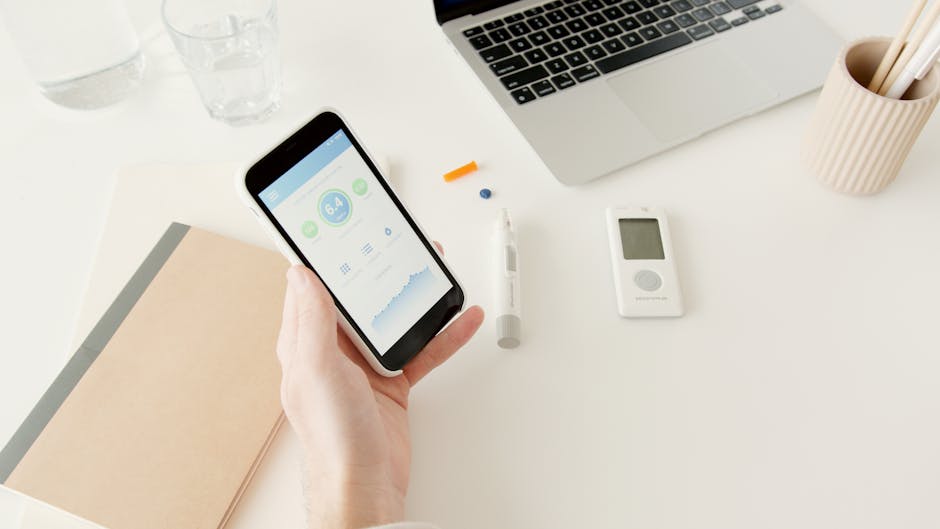
How Do AI-Powered Health Monitoring Wearables Deliver Personalized Wellness Insights and Motivate Healthy Habits?
Share
The Rise of AI-Powered Health Monitoring Wearables

AI-powered health monitoring wearables are transforming how we care for our bodies—making health tracking more proactive, personalized, and motivating than ever. These devices, from smartwatches to smart rings, combine powerful sensors and artificial intelligence to offer continuous health data tracking and actionable wellness insights right from your wrist or finger.
What Are AI-Powered Health Monitoring Wearables?
AI-powered wearables are electronic devices worn on the body that collect and analyze health data using artificial intelligence. This goes well beyond simple step counting—modern devices track:
- Heart rate and heart rhythm
- Blood oxygen levels
- Sleep stages and quality
- Body temperature
- Activity and movement patterns
- Stress and recovery metrics
AI algorithms sift through this data, spotting trends, highlighting anomalies, and delivering personalized advice. Users benefit from insights that once required frequent doctor visits or cumbersome medical equipment.
How Do AI Wearables Provide Personalized Wellness Insights?
Personalization is at the core of these devices:
- Continuous health data tracking means every heartbeat, movement, and sleep cycle is monitored and analyzed.
- Devices learn your baseline, so they can alert you to unusual changes—like an elevated resting heart rate or disrupted sleep.
- AI analyzes your unique patterns, delivering daily, weekly, and even real-time feedback tailored to your habits and goals.
- Many wearables provide readiness or recovery scores, helping you balance activity and rest for optimal wellness.
Example: The Oura Ring
The Oura Ring uses sensors to monitor heart rate, temperature, and movement 24/7. Its app delivers daily "readiness scores" and sleep analysis, all powered by AI. If you’re sleep-deprived or under stress, it suggests when to rest or be active.
Example: Apple Watch
The Apple Watch not only tracks your activity but also uses machine learning to detect irregular heart rhythms, warn you about possible atrial fibrillation, and monitor blood oxygen. Its Health app gives you a holistic view and delivers personalized health alerts.
Continuous Health Data Tracking: What Does It Mean for You?
Continuous tracking is a game-changer:
- Early detection: Subtle changes in your health may be spotted before symptoms arise, allowing for earlier intervention.
- Chronic condition management: For those with conditions like diabetes or heart disease, wearables can detect concerning trends and prompt timely action.
- Holistic picture: By collecting data day and night, these devices build a comprehensive view of your wellbeing—uncovering connections between sleep, stress, activity, and mood.
Motivation for Healthy Habits
Staying motivated is easier when you see progress and receive timely nudges. AI-powered wearables help by:
- Setting daily and weekly activity goals
- Offering friendly reminders to move, hydrate, or wind down for sleep
- Providing feedback on habits (like bedtime consistency or workout streaks)
- Celebrating milestones and progress toward goals
- Suggesting actionable improvements based on your unique data
This personalized, real-time feedback helps users stay engaged and build sustainable healthy habits—turning small changes into lasting results.
The Role of Mobile Health Tech
Most AI-powered wearables sync seamlessly with mobile health apps. These apps:
- Aggregate and visualize your health data in easy-to-read dashboards
- Deliver personalized coaching and insights
- Enable sharing reports with healthcare providers
- Offer community and social features for added motivation
Increasingly, mobile health tech is the hub for managing your wellness journey, connecting data from multiple devices and delivering a truly personalized approach.
What’s Next for AI Wearables?

AI-powered wearables are rapidly evolving. Expect to see:
- Even more sensors (for blood pressure, hydration, or glucose)
- Smarter, more predictive algorithms for early detection of illness
- Better integration with telehealth and electronic health records
- Enhanced privacy and data security controls
As the technology matures, these devices will become even more central to preventive, personalized, and connected healthcare.
Practical Tips: Choosing and Using AI-Powered Wearables
- Identify your goals. Are you focused on fitness, stress, sleep, or chronic condition management?
- Check compatibility. Make sure your wearable works with your smartphone and preferred health apps.
- Review privacy policies. Understand how your health data is stored and used.
- Start simple. Don’t get overwhelmed by features; focus on a few key metrics at first.
- Act on insights. Use your device’s recommendations to tweak daily habits gradually.
Caution: What to Keep in Mind
- AI-powered wearables are wellness tools, not substitutes for professional medical advice or diagnosis.
- Consult your healthcare provider before making any significant changes to your health routine.
- Be aware of data privacy and security considerations—choose reputable brands and review their policies.
FAQs
Are AI-powered health wearables accurate?
Most leading devices offer reliable tracking for heart rate, sleep, and activity, but accuracy may vary by device and condition. They are useful for spotting trends but are not a replacement for medical-grade diagnostics.
Can these wearables detect serious health issues?
Some devices can alert users to irregular heart rhythms or other anomalies, prompting timely medical evaluation. However, they should not be relied on as sole diagnostic tools.
How do wearables keep my health data private?
Reputable brands encrypt your data and provide privacy controls. Always review privacy settings and data sharing policies before use.
Will AI-powered wearables help me build healthy habits?
Yes, by providing reminders, progress tracking, and personalized advice, these devices support habit formation and sustained motivation.
Do I need a subscription to use all features?
Some advanced insights, coaching, or app integrations may require a paid subscription. Basic tracking and metrics are usually included with the device.
References
- Keragon (2025). AI and Wearable Technology in Healthcare in 2025. Keragon. Available at: https://www.keragon.com/blog/ai-and-wearable-technology-in-healthcare. Accessed 2025-10-24.
- TDK (2024). How AI and Wearable Devices Are Transforming Healthcare. TDK. Available at: https://www.tdk.com/en/tech-mag/past-present-future-tech/ai-and-wearable-technology-in-healthcare. Accessed 2025-10-24.
- uHoo (2025). Beyond the Basics: Advanced Health Tech for 2025. uHoo. Available at: https://getuhoo.com/blog/home/beyond-the-basics-advanced-health-tech-for-2025/. Accessed 2025-10-24.
